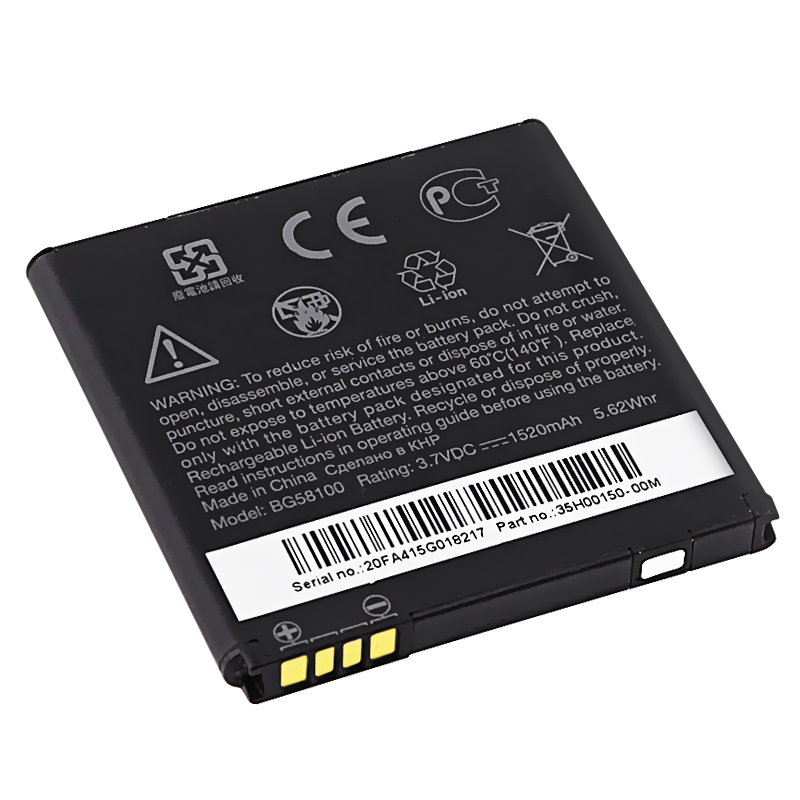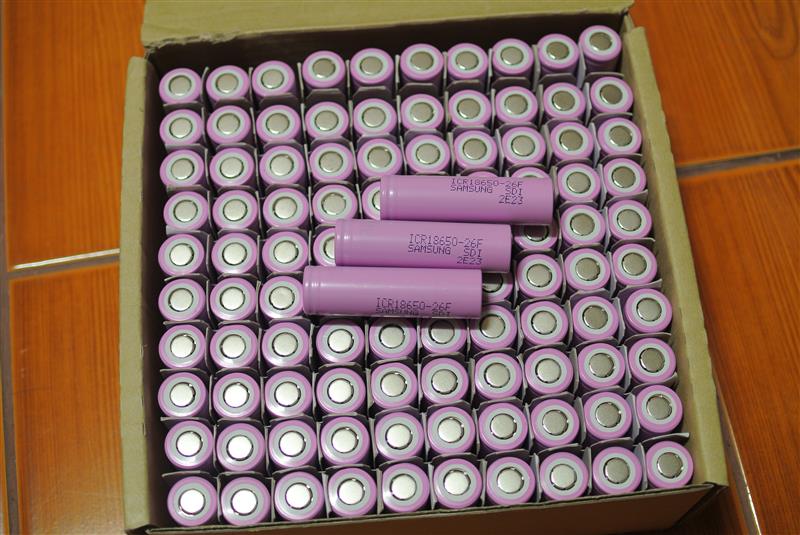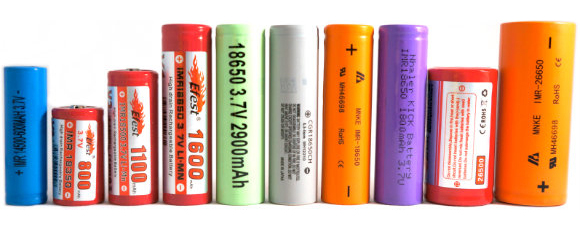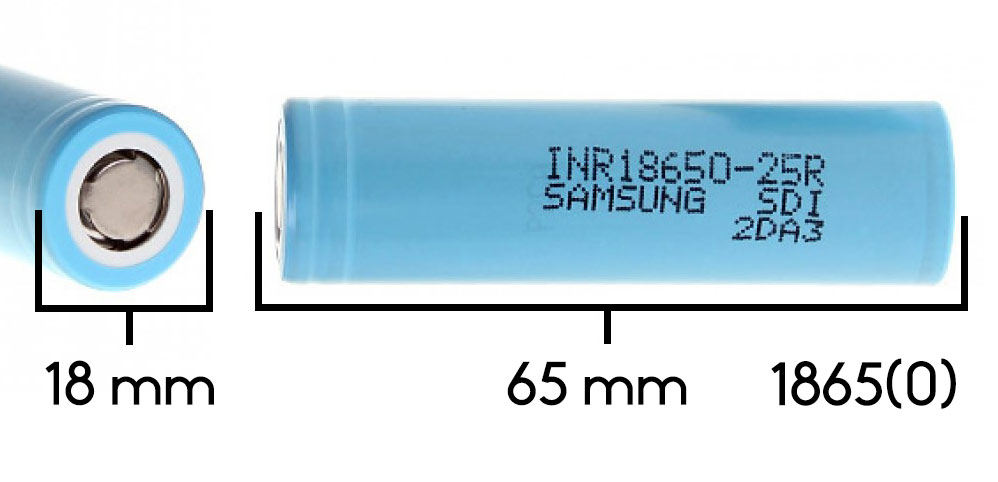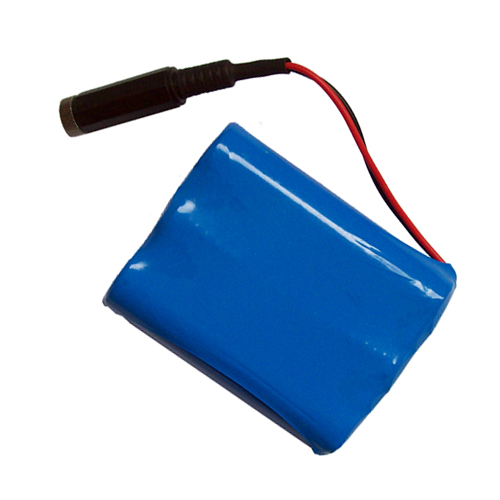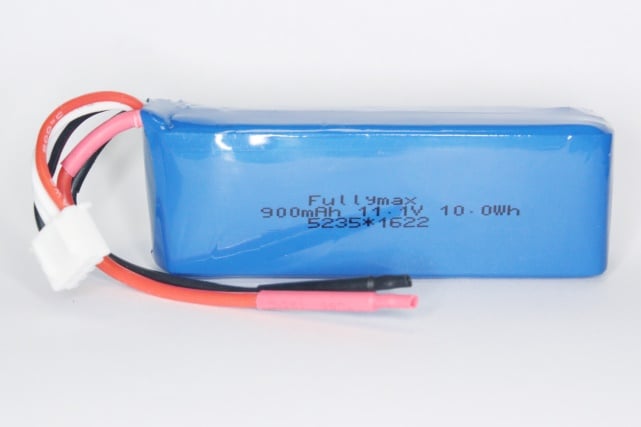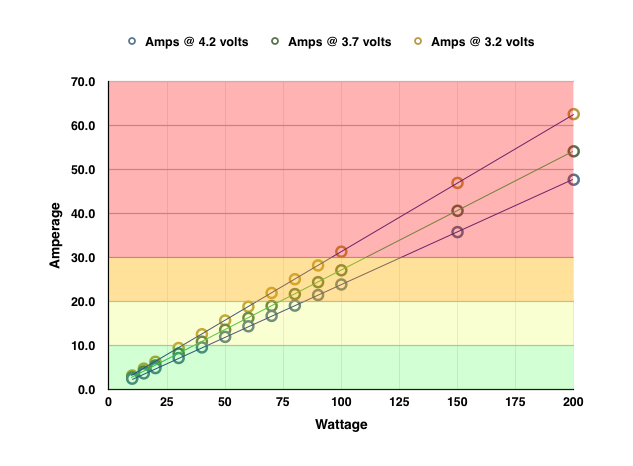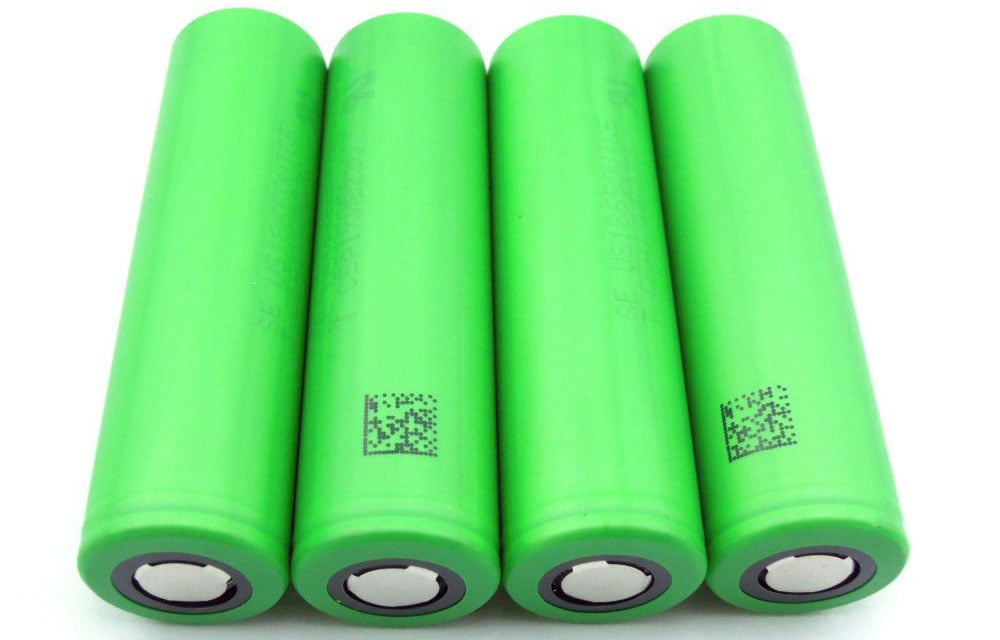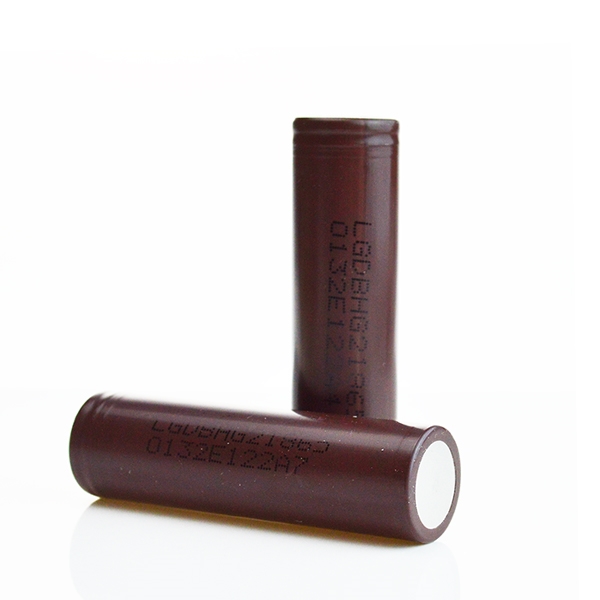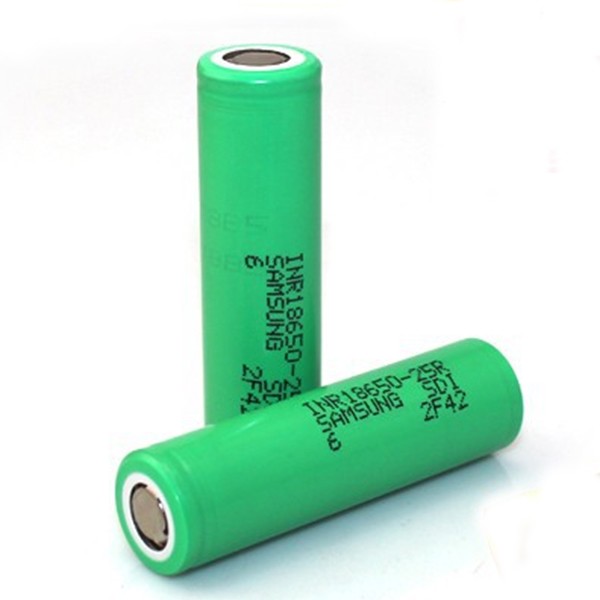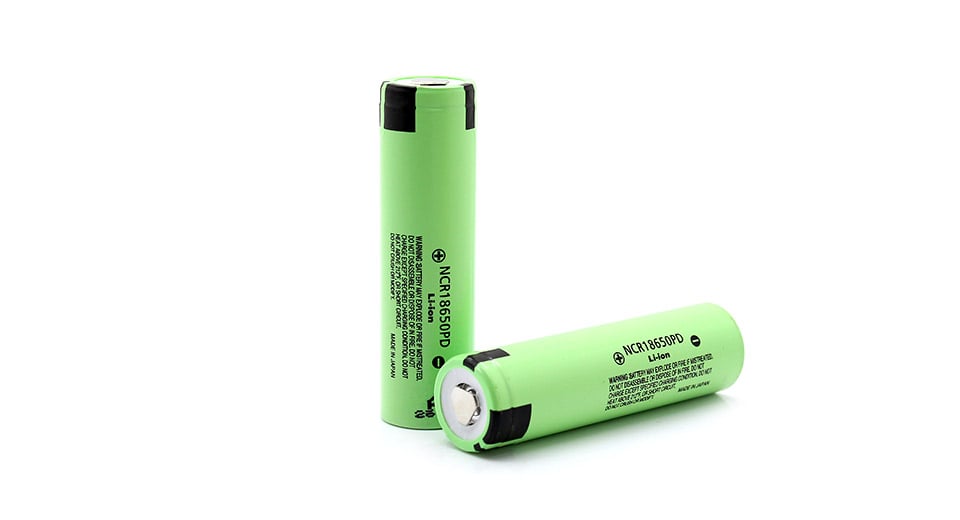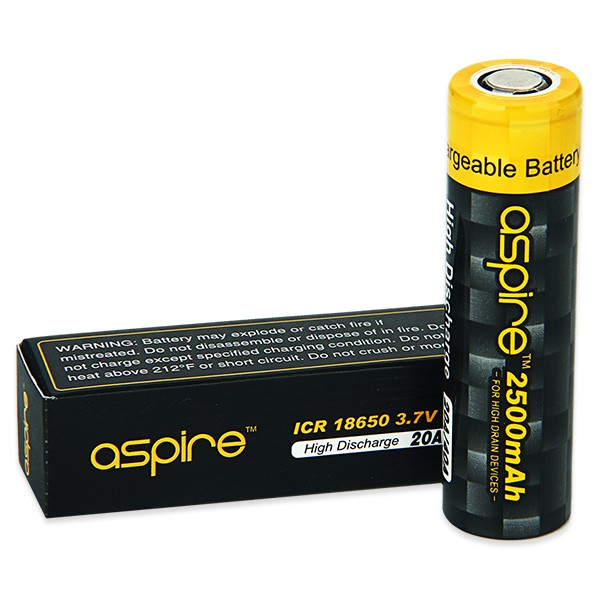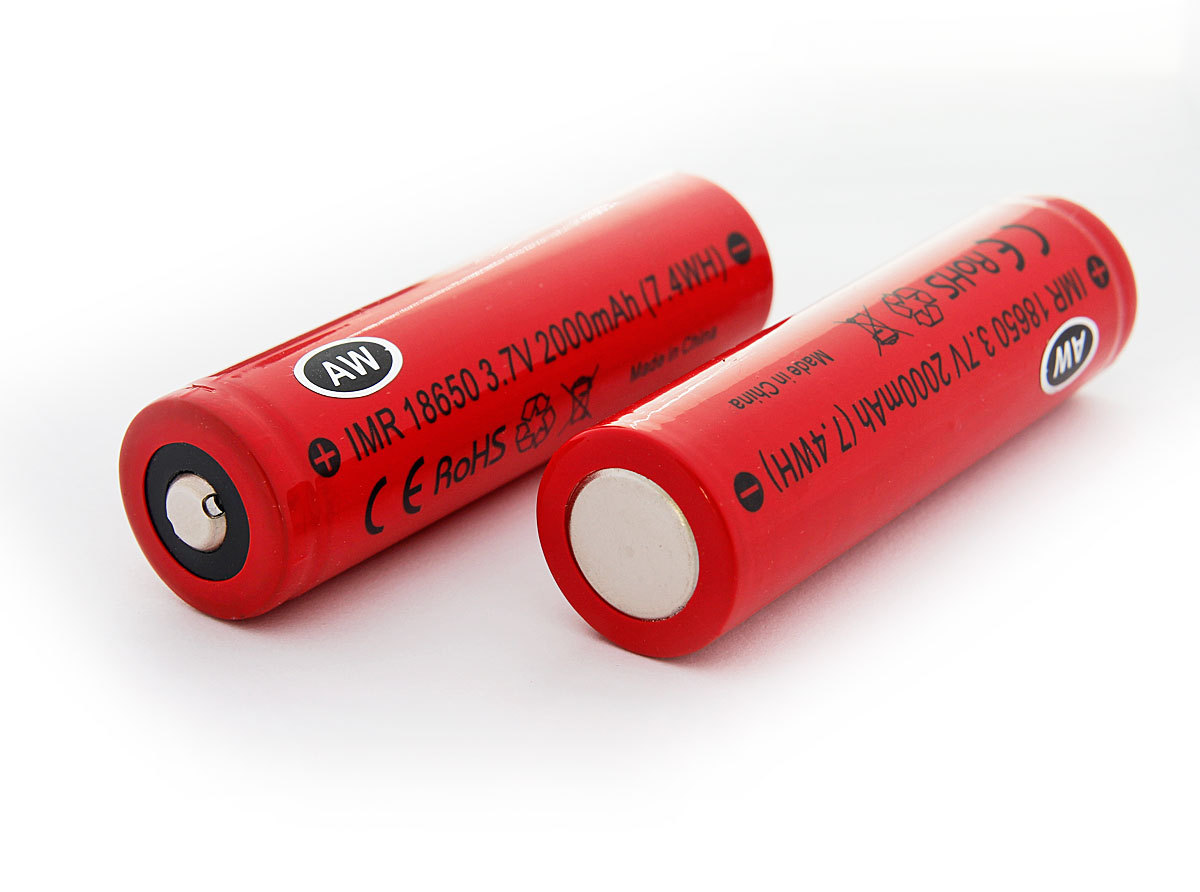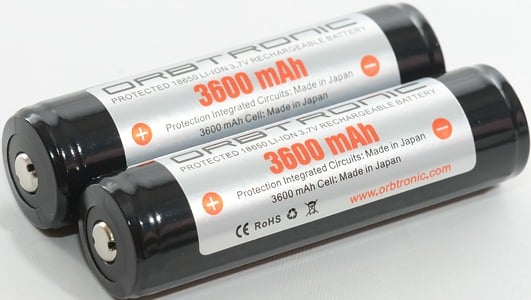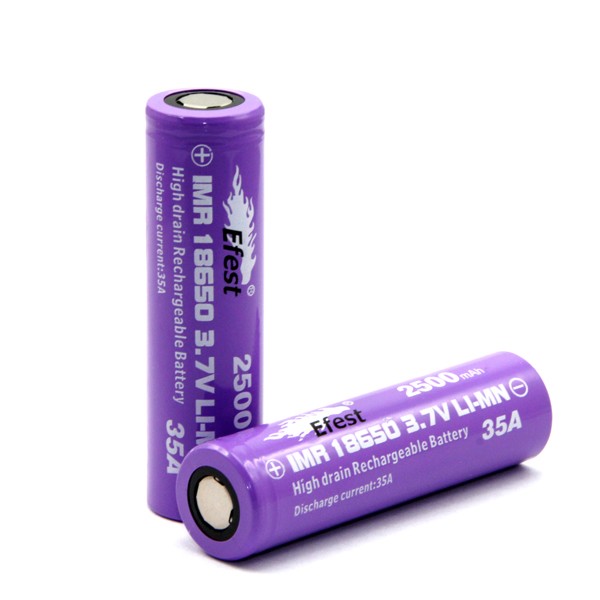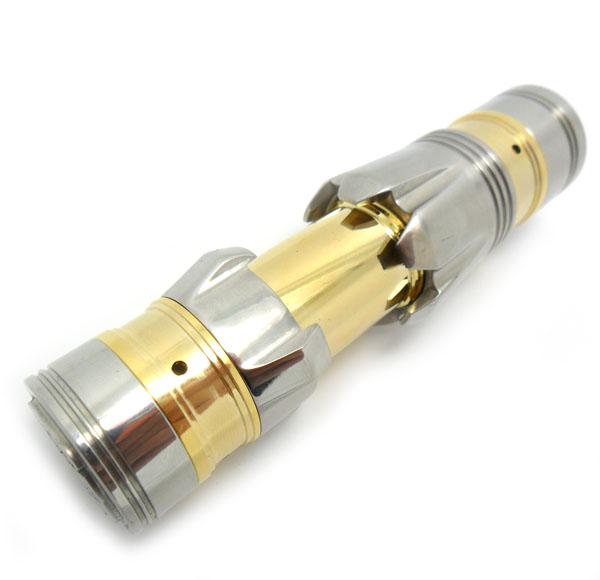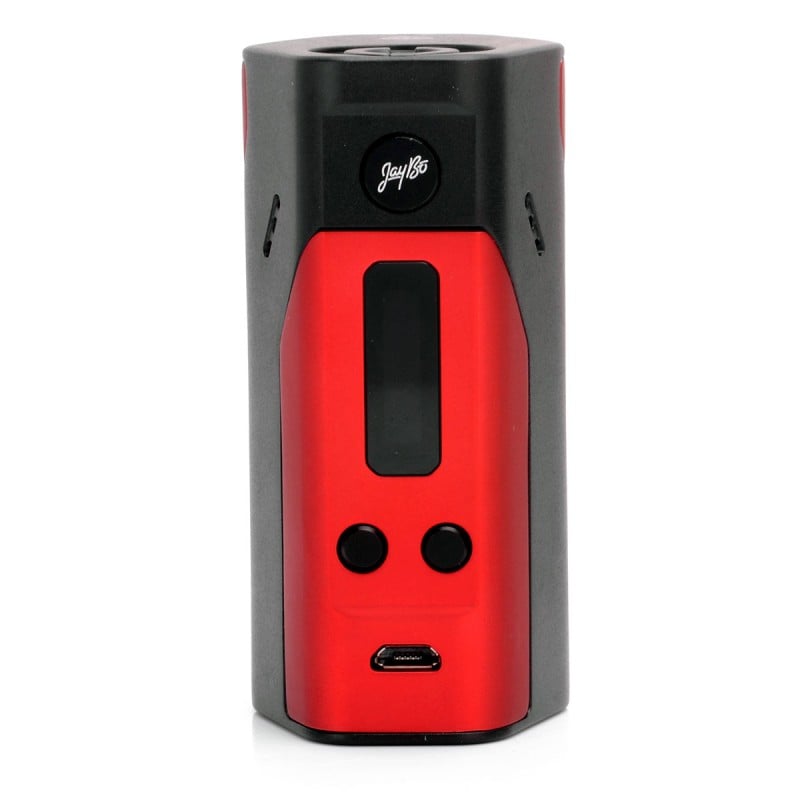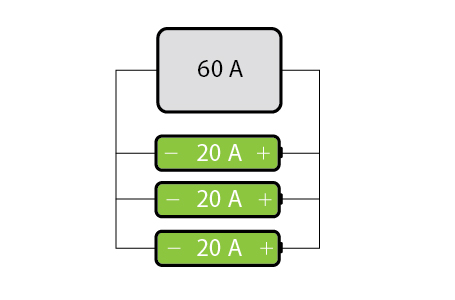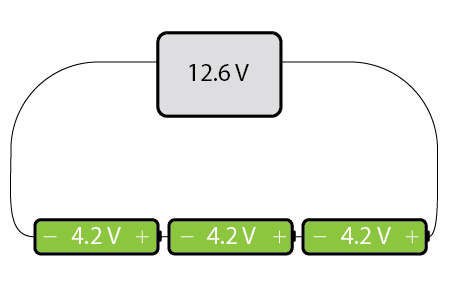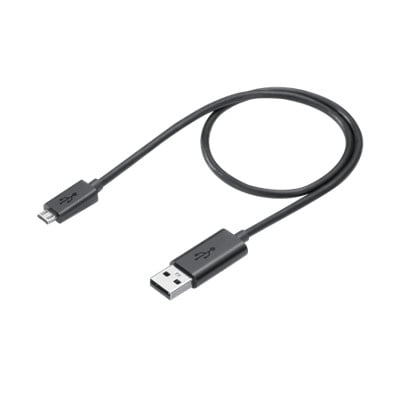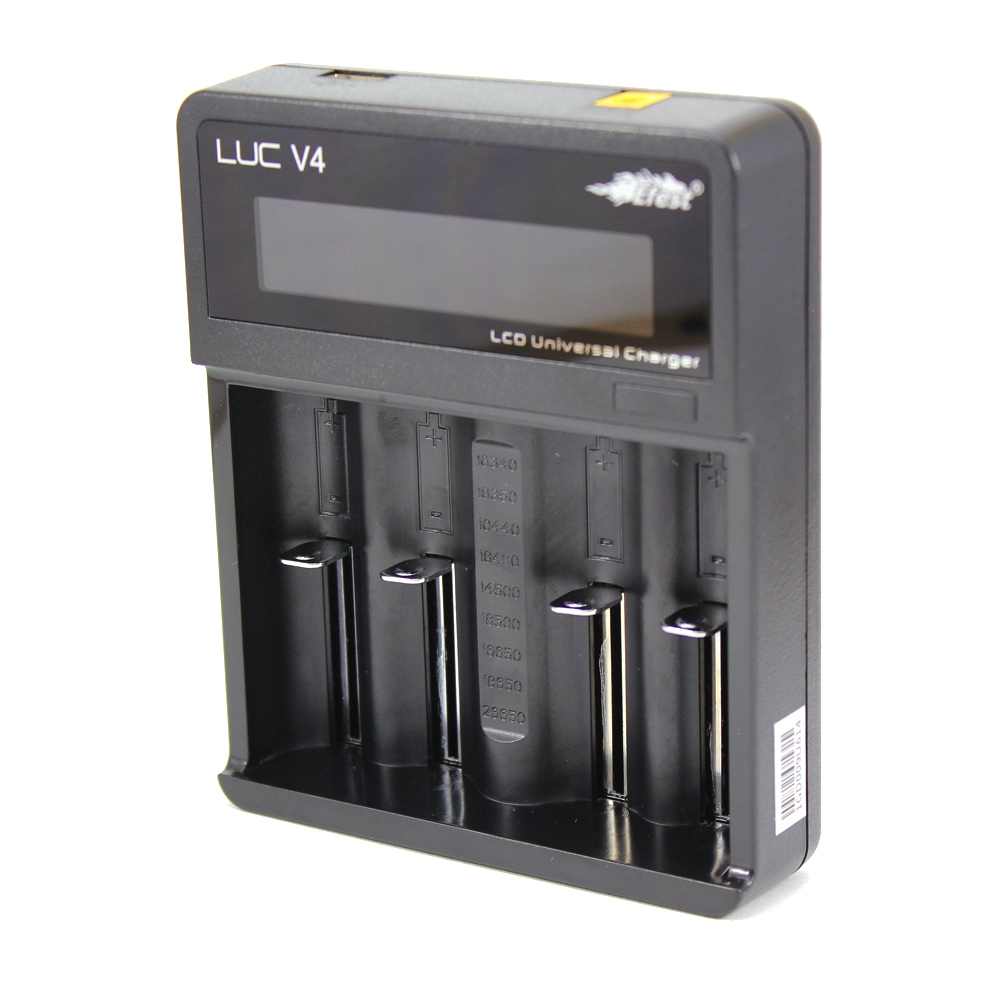Whether you like it or not, battery safety is a vital part of vaping. If we don’t want our newsfeeds flooded with stories of teenagers disfigured by exploding vaporizers, we have to spread this knowledge far and wide. So give this article a read. It might just come in handy one day.
A vaporizer battery is nothing special.
It’s nearly identical to the battery you keep in your pocket year-round, inches away from your genitals. I’m talking about the lithium ion in your cellphone. The same type of battery you’ll find in your laptop. And your tablet. And your PS4 controller.
They’re everywhere. And for good reason. Lithium ion chemistries offer plenty of power while staying relatively safe. They’re so safe, in fact, that they are the most common battery type used in medical devices. They’re even attached to human hearts.
Virtually all battery-powered devices released within the last decade use them. They account for almost half of all batteries today.
So why have vaporizer batteries been the focus of so much hate? Aren’t they the same as your cellphone?
Aside from the fact that it’s now cool to hate on vaping, the answer lies not in what they are, but in how they’re used.
While vaporizer batteries are no less safe than cellphone batteries, they are more prone to user error.
You see, major electronic companies have long “idiot-proofed” their batteries.
Your smartphone uses a custom-designed lithium ion, chosen specially to meet the physical demands of the device. It is tested thousands and thousands of times in the most stressful conditions your phone can produce. And then it’s tested some more.
Unless you play “kick-the-battery” or purchase an unofficial knock-off, smartphone batteries are never stressed beyond their safety ratings.
Vaporizers are a little bit more open-source than that.
Many of the devices sold today do not include a “manufacturer approved” battery. It’s up to YOU to choose a battery that can meet the physical demands of your device. And if you don’t know what you’re looking for, it’s pretty easy to choose an unsafe battery.
So, what happens if you choose a bad battery?
“Young dad’s leg turned BLACK after his e-cigarette battery exploded ‘like a firework’ in his pocket”
“Teen recovering from facial, neck burns caused by classmate’s exploding e-cigarette battery”
“Ogden teen hospitalized after e-cigarette explodes”
The good news is that safe batteries are easy to find—if you know what you’re looking for.
If your eyes gloss over when you hear terms like “continuous discharge rating” and “voltage discharge cutoff,” you can scroll down all the way to the bottom, where you’ll find a TL;DR (too long; didn’t read).
But whether you like it or not, battery safety is a vital part of vaping. If we don’t want our newsfeeds flooded with stories of teenagers disfigured by exploding vaporizers, we have to spread this knowledge far and wide. So give this article a read. It might just come in handy one day.
Table of Contents
Vape Battery Shapes and Sizes
Standard Battery Specifications
Battery Safety Ratings
Battery Chemistry
18650 Brands
Unregulated vs. Regulated Mods
Multiple Battery Mods
Charging Your 18650s
Battery Storage and Care
TL;DR
1. Vape Battery Shapes and Sizes
Since lithium-ions all work on the same basic principles, you could technically power your vaporizer with almost any battery.
But it should go without saying—don’t just stick a random battery in your vape. The likelihood of it being able to handle the demands of your vaporizer is low.
So it pays to know about the types of batteries you’ll be using in your vaporizer.
The two we’ll be talking about today are external round cells (mainly 18650s) and internal lithium ions.
External Round Cells
You’re probably familiar with 18650—the tall, chubby cousin of the AA. It’s the most common battery used in vaporizers, and can be purchased from any vape store in Canada.
But you can also find 10440s, 18500s, 18350s, 22500s, 22650s… You get the point.
So, what do all of these numbers mean?
It’s really quite simple. These numbers refer to the size of a round lithium ion cell.
Battery diameter (e.g. 18, 22)
Battery height (e.g. 35, 65)
Battery shape (e.g. cylinder, non-cylinder)
As I mentioned above, 18650s are the most common battery size for vaporizers. They produce the right amount of voltage, and many of them can handle the high-current discharge necessary for vaping.
Special Considerations for External Batteries
Round-cell external lithium ions are designed with exposed contacts. Like the AAs in your TV remote, this makes them easy to use in any device where they’ll fit. But also like your AAs, they’re vulnerable to a number of issues:
Touching conductive materials (like loose change) to their positive contacts can short and damage them
Damaged/torn battery wraps will expose their negative contacts, making them dangerous to handle
Conductive debris on either contact can cause a short
Inserting your batteries upside down may cause a hard short
You also need to be wary of counterfeits.
Because most companies producing 18650s only sell to large OEM’s (Original Equipment Manufacturers), the batteries you find at your local vape shop have been passed through the hands of several middlemen.
A large OEM first purchases 18650s from the original producers. The batteries are separated into different bins based on their quality. The best bins are used by the OEM or sold at a high markup, and the rest of the batteries are auctioned off to smaller local distributors.
Many of these local distributors then rewrap batteries with their own branding (Trustfire, Efest, etc.), or in some cases, with wrappers trying to imitate other brands (Sony, Samsung, LG, etc.). In many cases, these batteries are then sold off to exporters, who may also change their wraps.
As a result, it can be very hard to tell if you have an authentic battery or a rewrap.
Unless you have your own battery-testing equipment, do not order batteries from websites like FastTech, DHGate, or AliExpress.
Always purchase batteries from trusted vendors.
Internal Battery Packs
Most devices with internal batteries (e.g. iStick series, eGo series, etc.) use a variation of the lithium ion cells I described above. Depending on the size of the unit, they could be 10440s, 14650s, or even 18650s. They could be single, dual, or even triple cells.
Then there’s the LiPo (Lithium Polymer), which can be found in many DNA devices (like the VaporShark or Lavabox). These battery packs stack multiple lithium ion cells in a protective polymer casing. They can also be found in cordless phones, RC cars, and power tools.
Even though many internal batteries are nearly identical to the round-cell externals we mentioned above, they have several advantages when it comes to safety.
Internal batteries are chosen by the official manufacturer and tested for safety
Internal batteries are protected by additional wrapping or casings
Internal batteries have no exposed contacts
Special Considerations for Internal Batteries
When purchasing a device with internal lithium ion cells, it’s always important to check for authenticity. Fake and counterfeit devices plague the vaping world, and there are plenty of knockoffs being passed for the real thing.
It is also important to avoid replacing these battery packs yourself. Most device manufacturers do not sell standalone battery packs. So most battery replacements you’ll find are unofficial at best, and counterfeit at worst.
2. Standard Battery Specifications
Voltage
Most vaping batteries have a charge voltage of 4.2, a nominal voltage of 3.7, and a voltage discharge cutoff between 2 and 3 volts.
So what the heck does this mean, anyway?
It’s really not that complicated.
Let’s imagine for a second that your battery is actually a tiny powerlifter named Bob. Here’s a picture to get your imagination flowing:
When Bob is well rested and at peak strength, he can lift an absolute maximum of 420 pounds. He knows not to lift more than this weight, because it’ll probably lead to injury.
Bob’s maximum lift is your battery’s charge voltage. You should never charge your batteries beyond this point.
Now, just because Bob can lift a maximum of 420 pounds, doesn’t mean he does so every time he’s at the gym. Instead, he lifts 370 pounds for most workouts.
Bob’s regular routine is your battery’s nominal voltage.
Halfway through each workout, Bob becomes too tired to lift more than 370 pounds. By the end of the workout, he can hardly lift 320 pounds.
This is what happens when your battery discharges voltage.
And because the Bob knows his limits very well, he makes sure to stop when he can’t lift more than 300 pounds. Continuing after this point might cause him serious injury.
This is your battery’s discharge cutoff. Allowing your battery to drain beyond this point will make recharging it a very risky proposition.
Amperage
If voltage is the amount of weight Bob can lift, amperage is how quickly he can bust out reps. The heavier the weight, the slower he can lift (and vice versa).
Similarly, a battery’s amperage, or current, describes how quickly its charge is flowing.
Wattage
While most gym bros only obsess about their maximum weights, Bob knows that the true measure of strength is power—the combination of weight lifted (voltage) and the speed (amperage) it’s lifted at.
Wattage = voltage x amperage
Ampere-Hours
But weight, speed, and power aren’t the only metrics that Bob pays attention to. He also needs to keep track of his endurance.
He does this by measuring the pace at which he’s able to workout at for an hour straight.
This is your battery’s aH (amp-hour) rating, which is measured by the amount of current (amps) it can output for an hour.
mAh = Ah x 1000
Watt-Hours
But what if Bob wants to compare his endurance to Larry, who lifts a little less than him? It wouldn’t be fair to just compare the pace of their 1-hour workouts. We also need to include the weight they’re lifting to fairly compare their endurance.
This is why a battery’s watt-hour rating is important. It allows you to compare batteries with different voltages.
wH = volts x Ah
Internal resistance
Now let’s imagine that Bob tethers his weights to the ground with rubber bands for extra resistance.
These bands will represent your battery’s internal resistance.
The thicker these bands are, the harder Bob has to work to lift the weight.
Now it should come as no surprise, if Bob is using an especially thick band, he’ll have to drop his working weight to compensate for the added resistance.
This is what we refer to as voltage sag. Batteries with especially high internal resistance will experience drops in their voltage when they’re placed under load (being used).
3. Battery Safety Ratings
CDR (Continuous Discharge Rating)
Also known as an amp limit, a battery’s CDR is the maximum amount of current (amps) that you can continuously draw before it heats up to dangerous levels (usually above 75° C). Think of it like a powerlifter trying to lift his weights too quickly. It’s bound to lead to injury.
To find out how many amps you’re pulling from your battery, all you have to do is divide your power (the wattage setting on your device) by your battery voltage.
So let’s say you’re running a fully charged 20-amp battery like the LG HG2 at 75 watts. How many amps will you be pulling?
75 Watts / 4.2 volts = 17.9 amps
Phew, we’re under 20 amps! We’re good, then. Right?
Hold your horses.
Remember how your battery’s voltage decreases as it is discharged? Well, as your battery depletes, your device has to draw a higher current from it to maintain the same power. So let’s run the calculation again:
75 Watts / 3.2 volts = 23.4 amps
Damn! We’ve exceeded the HG2’s amp limit. What does this mean?
Well, at best, you’ll be damaging the cells and decreasing the battery’s life span. At worst, you’ll be heating it up to dangerous levels, risking the possibility of venting or flame.
Thankfully the HG2 uses a very stable chemistry, which means that it’s very unlikely to burst into flames, even when strained. Nevertheless, you should always observe your battery’s amp limits and stay within the recommended ranges.
The green range (0-10 amp) is safe for most batteries you’ll find at a vape shop
The yellow range (10-20 amp) is safe for many Efest, Samsung, Sony, and LG batteries
The orange range (20-30 amp) requires extreme caution, and should only be used for a select few batteries (like the Sony VTC5)
The red range (30+ amps) is danger zone. There are no 18650s on the market that have been legitimately rated above a 30 amp CDR
If you want to keep it super simple, you can find out the ABSOLUTE MAXIMUM SAFE WATTAGE of your battery by multiplying its amp limit by 3.2 volts (voltage at discharge cutoff).
Here are a few examples:
Sony VTC3 30-Amp = 96-watt maximum
LG HG2 20-Amp = 64-watt maximum
Panasonic NCR 10-Amp = 32-watt maximum
Pulse Discharge Rating
Many vendors will label their batteries with two discharge ratings, the official continuous discharge rating, and an unofficial “pulse” discharge rating.
This is the theory behind pulse ratings:
A battery discharged continuously heats up more than a battery discharged in short bursts
Vapers only discharge their battery for a few seconds at a time, allowing it to cool in between puffs
Therefore, vapers can exceed the CDR without damaging their batteries
And while this theory is technically sound, the pulse ratings you can find on many vendor’s websites are completely bogus.
This is because pulse ratings cannot be boiled down to a single number. Pulse ratings require another variable—time. We have to know not only the length of each pulse, but also the length of rest time between pulses.
Think about it.
If one battery is pulsed for 1 second and rested for 20, and another battery is pulsed for 5 seconds and rested for 2, will they heat up at the same rate?
Hell no!
The verdict:
Whenever you see a pulse rating represented with a single number (e.g. “35-Amp Pulse”), you should ignore it. It’s pure BS.
But even if vendors listed pulse ratings with their proper formats (including time), they’d still be bogus.
Continuous ratings come from manufacturers, who tests hundreds of batteries thousands of times in a lab with the best equipment money can buy.
Pulse ratings come from hobbyists, who test a couple of batteries a handful of times in a garage with makeshift equipment.
[Note: We’re not disparaging the awesome safety crusaders who have taken their own time and money to test batteries for the vaping industry. Their work has been absolutely vital to spreading battery safety facts throughout the world. We’re only judging vendors who use these tests to make bogus claims about battery limits.]
C Rating
If you’ve ever tried researching batteries online, you might have seen some vendors label their batteries with a C rating. It may look something like this:
Sony VTC4 2000mAh 15C
This rating is just a more roundabout way of describing the CDR. You can find a battery’s CDR by multiplying its C Rating by its Ah rating.
15 (C rating) x 2 (2000 mAh / 1000) = 30 CDR
4. Battery Chemistry
You know those cryptic acronyms in battery titles? IMR? INR? ICR? These codes refer to the combinations of chemicals that create the magic of invisible energy (i.e. electricity.) These different chemical compositions determine the balance between mAh ratings, internal resistance, longevity, and continuous discharge ratings.
In short, these acronyms play a big role in battery safety and stability.
IMR
IMR refers to L[i]thium [M]anganese [R]ound cells. They can discharge at high currents (~20 amps) without getting too hot, making them a popular choice for vapers. In the event of battery failure, IMR batteries may vent, but do not explode.
Pros:
Highest amp ratings
Lowest internal resistance
Highest tolerance to heat
Least likely to vent or explode when damaged
Cons:
Lowest mAh ratings
ICR
ICR refers to L[i]thium [C]obalt [R]ound cells. While they deliver the highest mAh ratings out of all the 18650 batteries, they also have the lowest amp limits, and are the most likely to explode. Because of cobalt’s volatile chemistry, ICR batteries often include protective circuits. But don’t fall for this false sense of security—these circuits are easy to trip with a high current discharge (like you’ll see in vaporizers).
Pros:
Highest mAh ratings
Built-in protective circuits
Cons:
Lowest amp ratings
Most likely to vent, flame, and explode
High internal resistance and voltage sag
INR
INRs, or L[i]thium [N]ickel and Manganese [R]ound cells, are a hybrid of IMRs and nickel-based chemistries. They offer the stability of manganese with the high power output of nickel. Given their better performance at virtually no cost to safety, they have become more popular in the vaping industry.
Pros:
Higher amp ratings than ICR and NMC
Lower internal resistance than ICR and NMC
More stable than ICR and NMC
Higher mAh ratings than IMR
Cons:
Less stable than IMR
Lower amp limits than IMR
Less mAh than ICR and NMC
NMC
NMCs are another hybrid chemistry of [N]ickel, [M]anganese, and [C]obalt. Like INR cells, NMCs reap the benefits of a stable manganese chemistry with the power of nickel. The addition of cobalt (in small quantities) also increases the cells mAh ratings beyond what is possible in regular IMR and INR batteries—without making them unstable.
Pros:
More stable than ICR
Higher amp limits than ICR
Lower internal resistance than ICR
More mAh than IMR or INR
Cons:
Less stable than IMR and INR
Lower amp limits than IMR and INR
Higher internal resistance than IMR and INR
5. 18650 Brands
Sony
Popular batteries:
Sony VTC3 Hybrid 1600 mAh 30-Amp Limit
Sony VTC4 Hybrid 2000 mAh ~24-Amp Limit
Sony VTC5 Hybrid 2500 mAh 20-Amp Limit
Sony’s line of hybrid 18650s has long been the staple of sub-ohmers world-wide. The combination of safe hybrid IMR chemistry, high amp limits, and low internal resistance made Sony’s VTC series an obvious choice for sub-ohm vaping.
Simply put, Sony was the undisputed king of vape-rated 18650s.
They were, because Sony claims to have stopped making them in 2014.
Yes, you read that correctly. Sony has officially stopped production of all 18650 batteries. So how the heck are they still being sold in vape shops?
Well, there are a few leading theories:
Sony had a huge stockpile of 18650s before stopping their production, and we’re being sold 2-year-old cells.
Sony originally outsourced production of 18650s to different factories. After Sony pulled out of the business deal, these factories continued making VTC 18650s without Sony’s approval.
Sony only stopped production temporarily, and is now making them in secret (because reasons).
All the Sony VTC batteries being sold today are fakes.
But in the end, no one really knows where these VTCs are coming from. It’s all just speculation.
If you can get your hands on an authentic Sony VTC5, it will likely be the best battery you’ll ever own.
But be careful. Their supply is extremely limited, and counterfeits are way more common than the real thing.
LG
Popular batteries:
LG NMC HD2 2000mAh 25-Amp Limit
LG NMC HE2 2500mAh 20-Amp Limit
LG NMC HE4 2500mAh 20-Amp Limit
LG NMC HG2 3000mAh 20-Amp Limit
Since the disappearance of the Sony VTCs, LG batteries have become the choice 18650s for many vapers around the world. Most LG 18650 batteries are high-drain NMC’s with high amp ratings (and surprisingly good capacities).
The HG2 is LG’s standout battery, producing the best capacity out of any high-amp 18650 on the market.
But because of their newfound popularity, LG batteries have become a serious target for Chinese counterfeiters. In fact, North American vendors have recently fallen victim to a huge scam involving counterfeited HG2 “chocolates.”
So make sure to always purchase you LG batteries from a reputable vendor. It also doesn’t hurt to double check their authenticity online.
Samsung
Popular batteries:
Samsung INR 25R2 (Blue) 2500 mAh 20-Amp Limit
Samsung INR 25R5 (Green) 2500 mAh 20-Amp Limit
Samsung INR 30Q (Green) 3000 mAh 15-Amp Limit
While Samsung doesn’t enjoy the same popularity in the vaping world as Sony or LG, their 18650s are a great choice for vaporizers.
This is because Samsung has a fantastic track record of creating batteries for high-discharge applications. Samsung 18650s are a very popular choice for power tools, which require stable INR chemistries and high amp-limits.
Panasonic
Popular batteries:
Panasonic CGR18650CH 2250 mAh 10-Amp Limit
Panasonic NCR18650B 3400 mAh 6.8-Amp Limit
Panasonic's aren’t particularly popular in the vaping industry. This is because many of them use NCR chemistry (nickel-cobalt), which lacks the stability of manganese. As a result, they have very low amp limits compared to Sony, LG, and Samsung batteries. They also have a tendency of exploding under stress.
The reason we’re even mentioning Panasonic batteries here is because they’re so easy to find. Not only are they widely available in vape shops and flea markets under their own brand, they are also sold by rewrapping companies like Efest and AW.
Unless you are vaping on low power settings (10-30 watts), Panasonic batteries should be avoided.
Aspire
Popular batteries:
ICR 18650 1800mAh “40-Amp Limit”
Long known for producing some of the best vaporizer tanks on the market, Aspire has recently jumped on the 18650 bandwagon, releasing a battery they claim has a CDR of 40-amps.
But that’s’s baloney.
Aspire does not manufacture their own batteries. Instead—like Efest or Trustfire—they rewrap cells from other manufacturers. And since the best engineers at Sony haven’t been able to crack the elusive 40-amp CDR, where exactly is Aspire getting these cells?
The simple conclusion is this: they just aren’t 40-Amp batteries.
In fact, according to stress tests performed by some of the biggest names in vaporizer safety, Aspire’s 18650s can’t even reach 30-Amps without heating up to unsafe levels (and sustaining serious damage). It’s much more likely that these are 20-amp batteries or below.
While Aspire is an otherwise reputable company, avoid their batteries like the plague. They have proven a complete disregard for accurate battery labeling practices.
AW
Popular Batteries:
AW IMR 18650 1600mAh 24-Amp Limit
Before vaping co-opted them, 18650s were the realm of flashlight hobbyists. In a bid to build ever more powerful flashlights (I’m not kidding here—this is an actual thing), some enthusiasts required high-drain, high-amp 18650s. Unfortunately, back in the early 2000s, authentic high-drain 18650s were hard to come by.
Enter Andrew Wan. Lifetime flashlight hobbyist. Entrepreneur extraordinaire.
Andrew saw a serious gap in the battery market, and built a company in China to fill it. His business model was based on purchasing top-bin batteries from reputable manufacturers and selling them to safety-minded hobbyists.
By the time vaping became a thing, AW had built a reputation for top-shelf, high-performance 18650s.
While many of his batteries are rewrapped 10-amp Panasonic's—and should only be used with caution—he does offer one fantastic 24-amp IMR. If you can get your hands on the authentic IMR cell, make sure to stock up.
Orbtronic
Popular batteries:
Orbtronic IMR 18650 2100mAh SX30 “30-Amp Limit”
Orbtronic Hybrid IMR 18650 3000mAh 20-Amp Limit
Orbtronic IMR High-Drain 18650 3500mAh 10-Amp Limit
While they are a known rewrapper, Orbtronic is often praised for their ability to obtain high-quality cells from companies like Panasonic and LG. And it’s true, many of their cells are top-notch. But like most re-wrappers, some of their batteries (like their 30-amp IMR), have highly exaggerated specs.
Their rewraps are hit or miss.
Orbtronic’s 20-Amp cell is quite likely an LG HG2, for example, and can be used safely in most vaping setups. But if we know that authentic Orbtronic Hybrid IMR’s are just rewrapped LG batteries, why not just buy LG batteries instead?
There’s simply no reason to buy Orbtronic 18650s.
Efest
Popular Batteries:
Efest IMR 2500mAh “35-Amp Limit”
Efest IMR 3000mAh “35-Amp Limit”
Efest IMR 3500mAh “20-Amp Limit”
Efest is a notorious rewrapper—which isn’t necessarily a bad thing. Because many of their products are rewrapped cells from Sony, Samsung, and LG.
What is bad, is that Efest is also notorious for greatly exaggerating their battery specs. This is especially true for their series of purple-wrap batteries. Playing on the ignorance of the average vaper, Efest claims that many of their cells have a 35 amp CDR. Unfortunately, no such cells exist. Tests indicate that these are closer to 20-Amps (if that).
Perhaps more worrying, however, is Efest’s use of Panasonic NCR18650B batteries for their “20-Amp limit” rewraps. Not only are the Panasonic BD’s only 10 amps, some batches of these Efest rewraps actually use the NCR18650BE batteries, which have a tiny 4-amp CDR.
While some Efest batteries are truly high-quality cells, the risk just isn’t worth it. Just buy the original LG or Samsung 18650s to save yourself the trouble.
TrustFire/UltraFire/___Fire
Popular batteries:
Not even worth mentioning
While we’ve been ripping on Aspire, Orbtronic, and Efest for shady rewrapping practices, nothing beats the sketchiness of a TrustFire battery.
Remember how battery manufacturers bin their batteries based on quality? Ever wonder what happens to the cheapest, shoddiest rejects that even Efest won’t touch?
TrustFire buys them up in bulk.
No, seriously. TrustFire’s business model involves buying the cheapest, lowest quality cells, and selling them with greatly exaggerated specs. Not that the specs are even impressive in the first place.
But perhaps most depressing, is the fact that some vape shops are still selling them alongside high-powered setups.
In case it isn’t obvious, never buy a TrustFire battery. Never put a TrustFire battery in your vaporizer. The only thing you can trust a TrustFire to do is start a fire. (Sorry not sorry).
You’ve been warned.
6. Unregulated vs. Regulated Mods
Unregulated
Unregulated mods, often-called “mechs,” or “improvised pipe bombs,” are a relic of the vaping past. While an unregulated mod is not always mechanical, a mechanical mod is always unregulated. This is because unregulated mods can have some simple circuitry (in the case of running multiple batteries, for example).
The one thing that all unregulated mods have in common (mech or otherwise), is a distinct lack of protective circuitry. You push a button to complete the circuit and your battery provides current to your atomizer. No voltage step-up or step-down. No cutoffs. No short-circuit protect. No over-discharge protection.
To find out why anyone ever thought this was a good idea, we have to go back to 2008.
Quick Vape History Lesson
At a time when the most powerful regulated vaporizers struggled to crank out 10 watts, some clever DIYers figured out how to custom-build a vaporizer that could hit the 100s. Their genius idea was to stick a low-resistance atomizer on a flashlight tube.
Yes, you read that correctly—a flashlight tube.
And because these people were clever (and well versed in battery safety), it kind of worked.
But it wasn’t long before regular vapers (i.e. not electrical engineers) got wind of this hot new way to blow “fat clouds.” And where there’s demand, there will be supply. The clever DIYers opened up businesses machining these devices in their garages. Chinese factories took notice and started cranking mechs out in the thousands. Before long, every vape shop carried mechanicals, and everyone wanted one.
The problem? Most people just didn’t know enough about battery safety. And so stories of exploding vaporizers flooded our news feeds.
Here is a very short list of things that can go wrong with a mech mod:
A short circuit (crossed leads, poor battery contact, misplaced or worn down insulators etc.) can cause your battery to vent and burst into flames
Accidentally building too low of a resistance (0.1>) can cause your battery to vent and burst into flames
Depleting your battery past its discharge cutoff and attempting to bring it to a full charge can cause it to vent and burst into flames
Holding the firing button too long (or accidentally keeping it pressed in your pocket or bag) can cause your battery to vent and burst into flames
Accidentally looking at it can cause your battery to vent and burst into flames
Okay, that last one was a joke.
But the rest are absolutely accurate.
The point is: you shouldn’t touch an unregulated device unless you know battery safety backwards and forwards.
But even if you double check every insulator 10 times a day, use an ohm reader every time you build a coil, only vape your batteries to half depletion, and develop OCD about locking your firing button, things can still go wrong.
My opinion? Unregulated devices belong in The Anarchist Cookbook. Not on vape shop shelves. Not in the hands of consumers.
Regulated
Regulated mods use complex chips that allow them to step-up or step-down the voltage of your batteries. Essentially, these chips are what allow you to increase or decrease your power, use temperature control, and charge your 18650s through a Micro-USB port. These complex electrical operations require several layers of battery protection.
What these chips can protect you from:
Discharging past cutoff: regulated devices will not fire below a preset voltage. The industry standard for this cutoff is 3.2 volts. Kanger devices have even higher cutoffs at 3.5 or 3.6 volts.
Overcharging: Much like your cellphone, a regulated device cuts off charger current as soon as your battery hits peak voltage (4.2). This doesn’t apply if you’re using an external charger.
Overheating: Unlike mechanical mods, regulated devices will prevent you from firing your device for more than 10 seconds. So accidentally firing the device in your bag or pocket will not cause your battery to overheat.
Short circuits/unsafe resistance: A regulated device will not fire if the resistance drops below safe levels. Depending on your device, this can range between 0.1 and 1 ohms.
With that being said, a regulated device can’t protect you from everything.
Exceeding amp limits: there is no reliable method for your device to check your battery’s amp limit. So there’s nothing preventing you from pushing your battery past its safe limits. It is your responsibility to choose a battery that can handle the current required by your vaporizer.
Physical damage of cells: from dropping your batteries, scraping their wrapping, or even keeping them in your car during hot summer days or cold winter nights, a damaged battery should not be used in any device—regulated or not.
Overcharging on external charger: If you’re using a multi-battery device, it may be more convenient to charge on a multi-bay external charger. If your charger is cheap or of poor quality, you may still overcharge your batteries.
7. Multiple Battery Mods
When you run more than one battery in a circuit, the rules change a little bit.
Don’t worry; it’s actually pretty simple.
While there are two different configurations (parallel and series) for multiple battery devices, they pretty much do the same thing in a regulated device; they allow you to increase your wattage significantly while staying within your battery’s amp-limit.
Let me explain.
Parallel Mods
Simply put, each battery running in parallel has its own positive and negative connections to the main circuit. So you don’t need to have all of the batteries inserted to complete the circuit (and fire your device).
In practice, this means that the load is evenly split between every battery in the circuit, giving you double the mAh and double the amp limit.
So if you’re using three 20-amp batteries in a parallel circuit, for example, you will actually have a CDR of 60.
Series Mods
A series circuit, on the other hand, cannot be completed if one of the batteries is missing. This is because each battery acts as a connection in the main circuit.
So instead of splitting the load between the batteries in a circuit, a series device treats all the cells as a single mega battery, adding their voltage together.
While a series device doesn’t increase the amp limit of the batteries, it allows you to vape at much higher wattages without exceeding it.
Remember how watts / volts = amps? Well, let’s do that calculation again, but this time with 12.6 volts instead of 4.2.
75 watts / 12.6 volts = 6 amps
A wattage setting that nearly maxed out a single LG HG2 becomes a cakewalk with 3 of them running in series.
IMPORTANT NOTE: if you are planning on grabbing a multi-battery device, ensure that your batteries are married. They should be the same exact cell bought at the same time. And they should always be charged and discharged together.
8. Charging Your 18650s
As we learned in the battery spec section, charge voltage is one of the most important numbers in battery safety. It doesn’t matter if you have a cheap TrustFire 18650 (you shouldn’t) or the much-revered Sony VTC5, exceeding a battery’s maximum voltage is a recipe for disaster.
The one thing keeping you from fiery doom is a good charger.
In order to understand why, we have to reference back to those boring battery specs we discussed earlier.
Remember that voltage is the weight that Bob the powerlifter can lift, while amperage is the speed at which he lifts it?
This applies to charging as well.
The voltage of your charger has to match the voltage of your battery. So, for 18650s, you should only be using chargers that provide a voltage of 4.2. Providing a higher load than that can cause your battery to short and vent.
The current (or speed) is equally important for a charger. Unlike your laptop charger, 18650 chargers have modestly low charging currents (usually between 0.5 and 2.0 amps). Charging too quickly will degrade your cell, decreasing its number of cycles and possibly damaging its structure.
Charging 18650s Internally
In most cases, devices with built-in charging (usually through micro-USB) have adequate protection for overcharging. They trickle current into your battery (usually at 0.5 amps) until it reaches its peak (4.2 volts for 18650s), abruptly cutting it off.
While wall plugs and laptop USB ports have different current potentials, the speed of charging is actually determined by the chip inside your device. Most vaporizers will cap your charging current at 0.5 amps, as this is the safest charging speed for 18650s.
As a rule of thumb, you shouldn’t charge your batteries internally if you’re using a series device. Funky things tend to happen when you batteries have different voltages.
For example, a battery with a lower voltage may be reverse-charged, causing damage to the cell and increasing the likelihood of it venting.
Batteries may also not be charged at the same rates—so interrupting the charge cycle early may create a large voltage disparity between batteries.
Remember how lower voltages require higher amperages? Well, when you have batteries of different charges in your series device, the battery with the lowest voltage is going to be strained the most. Over long period of time, this may lead to cell degradation and loss of stability.
Charging 18650s Externally
Although most single-battery devices can safely charge your batteries, you should still consider getting a dedicated battery charger. Beyond the convenience of being able to charge multiple batteries at once, dedicated chargers are simply safer.
If you are using a series or parallel device, an external charger is an absolute must. Because your batteries have to be married in this configuration, it is also important to get a charger that can charge all of the batteries at the same time.
The best 18650 chargers available surprisingly come from Efest. Despite Efest’s shady battery rewrapping practices, the vaping community holds Efest chargers in very high regard. They have excellent overcharge protection, multiple bays, and LED screens that display your battery voltage.
NiteCore chargers are another popular choice, boasting some of the safest charging protection in the industry.
Most other 18650 chargers should be used cautiously. This is especially true for brands like TrustFire, which are known to skimp on battery safety features.
9. Battery Storage and Care
So you’ve memorized different battery chemistries, wrapped your brain around voltages and amp limits, tracked down some authentic LG HG2’s, and grabbed an Efest LUC charger. You’re know everything about battery safety, right?
Not just yet.
There’s one more thing you need to learn. And pay attention, because this lesson applies to your cellphone and laptop batteries too.
Remember how smartphone manufacturers “idiot-proofed” their batteries, making them relatively safe for the average consumer?
Well, they can still explode.
And you don’t have to look too hard to find videos of this in action. Just search “what happens when you stab a cellphone battery” in Google for some light entertainment.
Now, we know you’re not going to be stabbing your batteries with knives or bludgeoning them with hammers any time soon. But the lesson is still the same. The number one cause of exploding batteries, beyond all else, is physical damage.
Imagine that your lithium ion battery is a little stick of dynamite.
You don’t want to expose it to extreme heat because it will explode. Duh. That’s an obvious one.
Less obvious, is the fact that you shouldn’t expose it to extreme cold. Cooling it below freezing can cause permanent damage to its chemistry—making it unstable when thawed.
And you definitely don’t want to drop it, crush it, break it, or otherwise physically damage it. Because— you guessed it—it will explode.
Your battery’s much the same—If you want to keep all of your fingers, avoid exposing it to extreme temperatures and physical damage.
So don’t leave your battery in the car. Don’t drop it. Don’t peel the wrapper.
To insure your batteries are always safe and protected, its worth picking a battery case for optimal storage.
If your battery has been exposed to these harsh conditions, or has visible damage (denting, peeling wrapper, etc.), DO NOT USE IT!
Instead, take it to the nearest recycling center for proper disposal.
10. TL;DR
That just about wraps it up for today. If we had to distill the article into a few short points, this is what you MUST watch out for:
Stick to batteries with manganese chemistries
Pay close attention to amp limits and never exceed them
Ignore pulse ratings
Don’t overcharge
Don’t over discharge
Always buy authentics (stick to Sony, LG, Samsung, and AW)
Don’t charge your batteries in a series device
Invest in a quality external charger
Never leave your batteries out in the cold (or the heat)
Don’t put batteries in your pocket
Invest in a battery case for safe transport
Recycle damaged batteries

